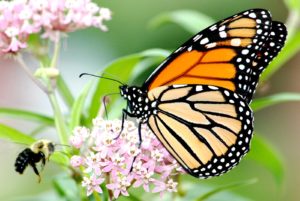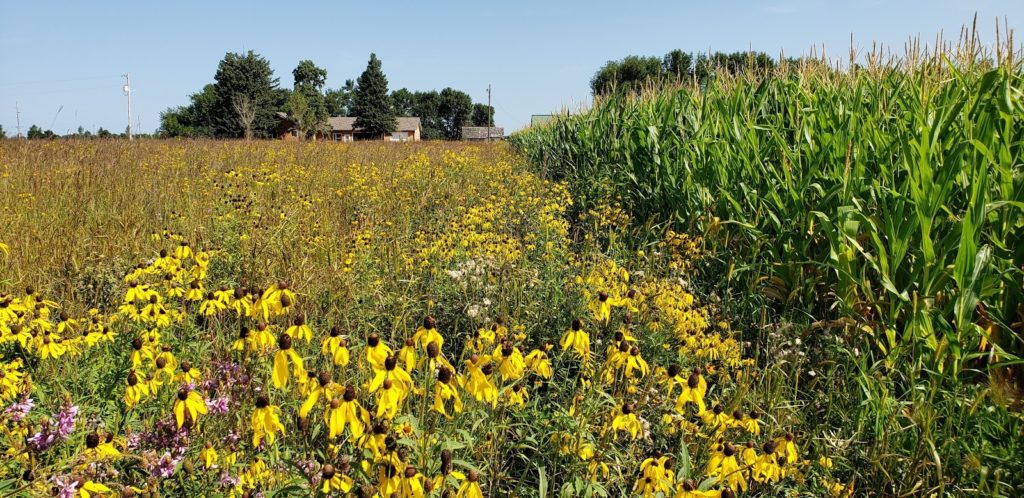
Sensible and responsible stewardship by growers during planting season should involve plans to protect monarchs, pollinators, and other beneficial insects that live near crop areas. This means safe and appropriate application of herbicides and insecticides to ensure harm to these insects and their habitat is minimized.
Seed treatments, such as neonicotinoids, have been used for many years to help control early season insect pests of certain crops. While seed treatments provide benefits, their use poses a potential risk to nearby pollinators and other beneficial insects because contaminated seed dust may drift from the site of planting or movement via surface water may contaminate surrounding areas. The seed dust can contain small amounts of insecticide scraped off the treated seeds planting of the treated seeds.
There are technological options to prevent drift. While the Monarch Collaborative does not endorse one technology over another, we have discussed agricultural technologies, such as pollinator friendly seed flow lubricants, available to growers that help in improving ease of planting while also protecting pollinators. We recommend growers consider all available options to reduce drift and choose the approach best suited for them.
Also, sometimes seed will get spilled. It’s important to cover up or pick up spilled seed to reduce the unintended spread of insecticides.
BeSure! is an initiative from Growing Matters that provides numerous resources for farmers to use crop protection products safely and responsibly, including specific recommended steps for growers to follow during planting season. The initiative has also published the Insect Pollinators and Pesticide Product Stewardship guide, which provides recommendations for pesticide use. Some included recommendations are to thoroughly read the product label, communicate with neighboring landowners and applicators, and evaluate the weather prior to applicating.

Responsible pesticide stewardship requires knowing how to identify monarch and pollinator habitat ensuring the protection of these basic habitat needs. The Natural Resources Conservation Service (NRCS) specifically identifies two basic habitat needs for pollinators: flowering native or naturalized plants, and egg-laying or nesting sites. In the farm landscape, this essentially means that most field margins, roadsides, vacant farmsteads, buffers, or other grassland areas are providing some sort of pollinator habitat. The Monarch Joint Venture developed a document to help growers identify milkweeds common in each region. The USDA-NRCS Plant Database is another valuable resource available to landowners to identify pollinator habitat. It also provides technical guidance for conservation planners to protect and improve pollinator habitat.
Both the western and eastern population numbers of monarch butterflies are in trouble. During the 2020 California Thanksgiving Count of the western monarch overwintering population, searchers found just 2,000 monarchs, an estimated 99% decrease since the 1980s. The eastern counts, based off measurements of overwintering sites in Mexico, counted 2.1 hectares of butterflies. Far short of the 6 hectare annual goal.
Responsible stewardship practices during planting and throughout the growing season are needed now more than ever. By following a few steps we’ve outlined, growers can responsibly plant crops while minimizing harm to monarchs and other pollinators.
